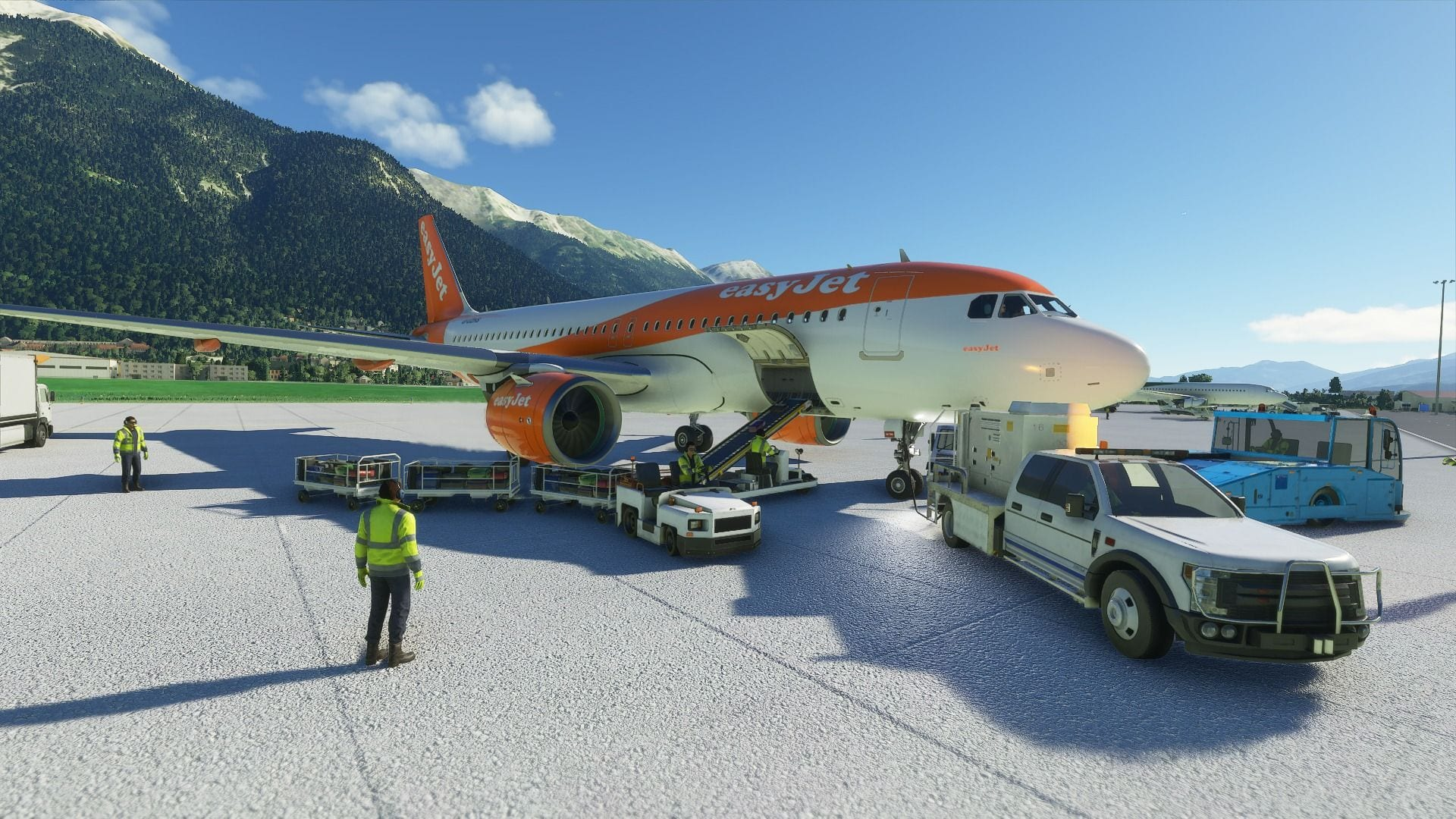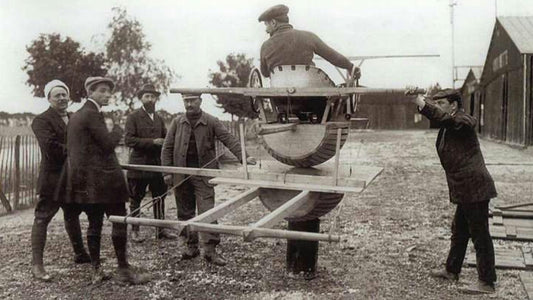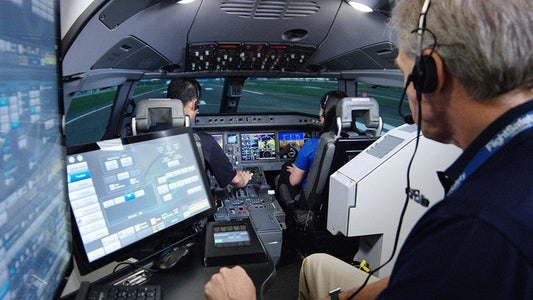Things to Consider When Buying Flight Simulators for Your Business

Figure 1: A Plane Unloading Cargo
Starting a sim flight centre is much different to starting a sim racing centre. Flight simulators are primarily designed for the training of pilots and commercial research purposes. Unlike sim racing, they are not typically used for gaming; though it’s worth noting that a passionate sim flight gaming community does exist, small, but vibrant and deeply dedicated to their niche.
Regardless of this, whatever your reason for setting up a sim flight business, there are key areas of concern that require utmost attention. Make sure you go through these in order to get the most out of your flight simulator gear. A well-thought-out sim flight business can bring handsome returns if launched properly.
So, without any further ado, let’s make sure you know the ropes!
Purpose and Training
 Figure 2: A Plane Taking Off In A Flight Simulator
Figure 2: A Plane Taking Off In A Flight SimulatorFor a start, here are a few things to consider in this step. Are you going to use the sim flight setup for pilot training or aviation entertainment? If not these, then will it be dedicated to research and development and to be used by professionals?
If you can’t answer now, don’t worry. Take your time understanding the specific use case of your sim flight business.
With that figured out, now consider whether you need flight simulators for fixed-wing aircraft, helicopters, or military jet simulations. This will help you determine what sim flight software you need and what corresponding sim flight setup is needed since some flight simulators are designed to be platform-specific and work with sim flight software available on that platform.
For instance, Thrustmaster T.Flight HOTAS 4 stick is primarily designed to work with PlayStation 4 consoles and Windows PCs. As such, it does not support any sim flight software that is designed for Xbox only.
Simulator Certification Level

Figure 3: An Aspiring Pilot Training In A Sim Flight Centre
You can ignore this step if your target audience is sim flight gamers or hobbyist aviation enthusiasts. However, if your sim flight business is involved in commercial pilot training, you'll need simulators that comply with the regulatory standards set by aviation authorities like the FAA (Federal Aviation Administration) or EASA (European Union Aviation Safety Agency).
These aviation authorities have strict certification requirements that simulators must adhere to and their certifications are social proof that your sim equipment provides realistic and effective training environments. Part of this requires you to have a state-of-the-art sim flight setup.
Just so you know, flight simulators are categorized by fidelity levels, ranging from low-fidelity desktop models to full-motion simulators. Certified simulators by these aviation authorities are classified from Level A to Level D, with Level D representing the highest fidelity. The choice of certification level that you go for ultimately depends on your business’s training needs and budget.
Realism and Technology
 Figure 4: First Person View From A Flight Simulator
Figure 4: First Person View From A Flight SimulatorWhen you go to buy flight simulator gear, focus on components that offer high-resolution displays, realistic cockpits, and durable, tactile controls. The layout of the sim flight controls should closely mimic real aircraft and offer features like force feedback and haptic responses that replicate the feel of actual flight conditions.
Popular flight simulator equipment, such as the Honeycomb Alpha Flight Controls, Logitech G Pro Flight Yoke System, and Thrustmaster TCA Yoke Pack, are known for their immersive features and build quality, making them excellent options for creating a top-tier sim flight setup.
Check out this 5-star Amazon review on Honeycomb Alpha Flight Controls:
“This is the best yoke ever! Seriously! Complete 180 degree movement, feels sturdy, very easy to install. I use both MS Flight Simulator and X-Plane 12. I plugged in the USB connector and went into the program to find it was already recognized and the most often used button and switches were already mapped for me. It isn't cheap but you definitely get your money's worth. Almost like it came right out of the Cessna factory.”
Likewise, here’s what a happy Amazon customer has to say about Logitech G Pro Flight Yoke System:“I did lots of research before purchasing this flight yoke system. My goal was the buy a system that worked well, was reasonably realistic, without costing a fortune. This ticked all of those boxes. I especially like that it includes the throttle quadrant with makes for a very realistic flying experience. This system pairs very well with MS Flight Sim and X-Plane 12. I've tried it with other simulations and it does a great job. Highly recommended.”
Motion-Capable or Fixed Base?
 Figure 5: Motion-Capable Flight Simulators
Figure 5: Motion-Capable Flight Simulators
Flight simulators are generally of two main types: motion-capable and fixed base. While a fixed base sim flight setup can provide a great experience, incorporating motion-capable simulators can be a game changer for your sim flight centre. Nevertheless, you must decide between these carefully.
When choosing between motion-capable and fixed-base simulators, it's always important to consider your goals.
Motion simulators are essential if you’re focusing on scenarios that require high realism, such as turbulence, takeoffs, and landings. These simulators recreate the physical sensations of flight and offer an immersive experience that can significantly enhance training effectiveness. This is largely due to the fact that high-end models feature all 6 Degrees of Freedom (DOF), allowing for full movement along all axes: pitch, roll, and yaw, as well as vertical, lateral, and longitudinal translation. The only downside to motion-capable sim racing setups is that they can be a lot more expensive to run and manage than what your budget allows.
In case your sim racing centre is primarily for recreational purposes, you can opt for fixed-base simulators which don’t move but still offer high-quality visuals and controls.
Space and Budget Requirements

Figure 6: A Fixed-Base Small-Scale Sim Flight Setup
Before purchasing flight simulators, don’t forget to evaluate the physical space required for installation. You don’t want to run out of space while installing your simulators neither want to be left with unnecessary empty space once everything is installed.
As such, take measurements of the available space since flight simulators consume significant room. If you're starting small, consider a scalable approach. In other words, start small and then rent a larger space once your sim flight business gains momentum.
Additionally, think about the technical infrastructure needed as well. High-end simulators often require dedicated power sources, strong networking, and proper climate control to function optimally. Planning these elements in advance will prevent costly delays during installation.
Budget is another key factor. High-fidelity simulators, especially motion-capable ones, come with a hefty price tag. Beyond the initial investment, factor in operational costs like software updates, repairs, and energy consumption. Maintenance can also add up quickly, especially for complex systems. Therefore, plan your budget accordingly so that your sim flight setup is financially sustainable in the long run.
Trained Staff Availability

Figure 7: A Trained Employee Guiding A Sim Flight User
Last, but not least thing to consider is trained staff availability. Having trained staff is critical for the smooth operation of a flight simulator business.
For instance, experienced personnel can quickly address technical issues, troubleshoot problems, and ensure the simulators are running optimally. This not only minimises downtime but also enhances customer satisfaction.
However, finding qualified staff is easier said than done. Skilled technicians often come with higher salary demands, which may strain your budget.
If trained professionals are not readily available, consider investing in the training of potential employees first. We strongly recommend this because inadequate support can lead to prolonged technical problems and dissatisfied clients, which, in turn, can harm your reputation. Trust me, the last thing you would want is to be known for poor customer support and untrained staff.
Conclusion
Investing in a flight simulator for your business requires careful consideration of multiple factors, from defining your purpose and choosing the right equipment to ensuring adequate space, budget, and trained staff.A well-planned sim flight setup can lead to significant returns, whether for professional pilot training or aviation entertainment. By addressing these key areas, you’ll set a strong foundation for success and ensure a smooth, rewarding experience for both your sim flight business and your clients.
What do you think? Share your thoughts with us and let us know in the comments down below!





